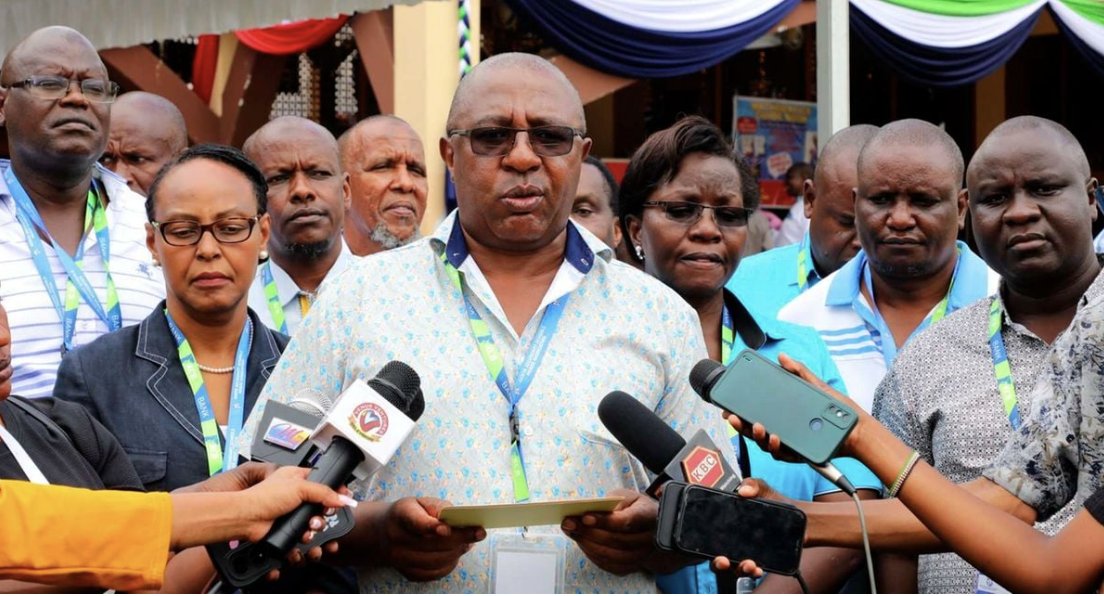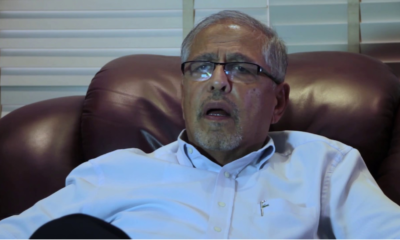News
Shock of A Nyanza School That Received Sh87 After Govt Released Sh22B For Schools
The annual capitation per learner is supposed to be Sh22,244, making the Sh87 disbursement particularly shocking for affected schools.

Headteachers express outrage as government’s multi-billion capitation disbursement translates to pittance for individual institutions
A headteacher in Nyanza region was left in utter disbelief after discovering that his school had received a meager Sh87 from the government’s much-publicized Sh22.03 billion capitation fund disbursement for Term Two.
The shocking revelation has exposed the gaping disparity between government announcements and the reality on the ground, with school administrators across the country reporting receiving amounts as low as Sh87 to a maximum of Sh4,000 – figures they describe as “outrageous” and insufficient to run basic school operations.
“I was notified that Sh87 had been credited to the school account and have confirmed it,” said the frustrated headteacher, who requested anonymity. “What is Sh87? This means there will be no activities in schools this term.”
On May 20, 2025, Education Cabinet Secretary Julius Ogamba announced the release of Sh22.03 billion in capitation funds after a three-week delay, promising to “facilitate smooth learning activities and ease the financial strain that many schools have faced since the start of the term.”
The funds were allocated across various levels: Sh1.37 billion for Free Primary Education, Sh8.9 billion for Free Day Junior School Education, Sh118 million for Junior School Special Needs Education, and Sh11.6 billion for Free Day Secondary Education.
However, the ground reality paints a starkly different picture. Schools that expected meaningful financial relief to address operational challenges have instead received amounts that cannot cover even basic utilities for a single day.
The situation has pushed many institutions to the brink of collapse. A primary and junior school head in Seme, Kisumu County, described his institution as “fighting for survival” after receiving slightly over Sh4,000.
“Many of our classrooms are in a deplorable state, with holes on floors and broken windows. We do not have enough classrooms for junior school and Grade Seven pupils have little space for learning,” the headteacher explained.
The capitation funds are meant to support two critical areas: tuition and general-purpose operations. The general-purpose account covers staff wages, repair and maintenance, electricity, activities, and local travel expenses.
“We are expected to run the school with this token. We don’t know where to start with running the school’s day-to-day operations,” the Seme headteacher added.
The crisis has prompted calls for legislative intervention, with headteachers demanding that Parliament summon top Ministry of Education officials to explain the funding fiasco.
“Let Parliament be made aware. Our learners and parents have rights. School heads have rights too. Budgeting is money, not mere words and promises. How do we work with nothing?” questioned one frustrated administrator.
The situation is further complicated by a ministry circular warning headteachers against seeking financial help from parents, effectively leaving schools with no alternative funding sources.
Kisumu County Education Executive John Awiti, a former principal and ex-chairman of the Kenya Secondary School Heads Association, warned that the funding delays and inadequate disbursements could have severe long-term consequences for Kenya’s economy.
“Education is the foundation of life and should be prioritized in the budget. Taking long to send money to schools or sending little amounts will definitely have a long-term effect on the economy of this country,” Awiti emphasized.
When contacted, Nyanza Regional Director of Education Lawrence Karuntimi expressed surprise at the reports, saying he was unaware of schools receiving such minimal amounts.
“If true, we will find out from Nairobi where the disbursement was done,” Karuntimi promised.
However, several critical questions remain unanswered by the Ministry of Education:
– The exact amount allocated per learner
– Whether the disbursement includes cash unremitted in Term I
– Whether the funds constitute the expected 30 percent of annual capitation reserved for Term II
The funding crisis highlights the broader challenges facing Kenya’s education sector, where headteachers find themselves “trapped in a painful paradox” – expected to deliver stellar exam results while grappling with severe funding shortfalls.
With schools unable to conduct basic operations, print examination materials, or maintain infrastructure, the quality of education hangs in the balance. The situation in marginalized areas is particularly dire, with some institutions leaving learners idle in classrooms due to lack of resources.
As the standoff continues, the voices of frustrated headteachers grow louder, with many calling for an end to what they describe as suffering in silence. The Sh87 received by the Nyanza school has become a symbol of the disconnect between government promises and educational reality – a stark reminder that in Kenya’s education sector, numbers in press releases don’t always translate to meaningful support on the ground.
The annual capitation per learner is supposed to be Sh22,244, making the Sh87 disbursement particularly shocking for affected schools.
Kenya Insights allows guest blogging, if you want to be published on Kenya’s most authoritative and accurate blog, have an expose, news TIPS, story angles, human interest stories, drop us an email on [email protected] or via Telegram
-

 News4 days ago
News4 days agoTemporary Reprieve As Mohamed Jaffer Wins Mombasa Land Compensation Despite Losing LPG Monopoly and Bitter Fallout With Johos
-

 Business2 weeks ago
Business2 weeks agoPanic As Payless Africa Freezes With Billions of Customers Cash After Costly Jambopay Blunder
-

 Investigations4 days ago
Investigations4 days agoFrom Daily Bribes to Billions Frozen: The Jambopay Empire Crumbles as CEO Danson Muchemi’s Scandal-Plagued Past Catches Up
-

 Investigations1 week ago
Investigations1 week agoHow SportPesa Outfoxed Paul Ndung’u Of His Stakes With A Wrong Address Letter
-

 Sports3 days ago
Sports3 days ago1Win Games 2025: Ultimate Overview of Popular Casino, Sports & Live Games
-

 News2 weeks ago
News2 weeks agoSCANDAL: Cocoa Luxury Resort Manager Returns to Post After Alleged Sh28 Million Bribe Clears Sexual Harassment and Racism Claims
-

 Business4 days ago
Business4 days agoHass Petroleum Empire Faces Collapse as Court Greenlights KSh 1.2 Billion Property Auction
-

 Investigations1 week ago
Investigations1 week agoInside the Deadly CBD Chase That Left Two Suspects Down After Targeting Equity Bank Customer Amid Insider Leak Fears




















